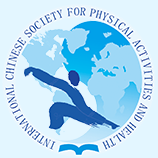Document Type
Abstract
Keywords
physical exercise function training, primary school students, physical education
Publication Date
2-2023
Abstract
Recently, the physical health problems of children in China have attracted extensive attention. The education department has issued a notice on further strengthening the physical health management of primary and secondary schools. Many studies have shown that physical exercise function training has unique advantages in promoting the healthy development of students' physique and is unaffected by venues or weather. This study aims to explore and verify the intervention effect of physical exercise function training on students’ physical health indicators, including physical shape, function, and quality. It also intends to practically explore the improvement of students' physical health status and expand their physical education and health curriculum. Sixty-four elementary school students were selected to participate in the experiment: 32 were in the experimental group and 32 in the control group. The experiment was conducted three times a week for 10 weeks. The experimental group performed physical exercise function training teaching. The control group underwent routine PE teaching. Before and after the experiment, the compulsory indexes of Grade 4 in the national physical health standard for students (revised in 2014) were selected for the test, including height, weight, vital capacity, 50m running, sitting forward flexion, 1-minute rope skipping, and 1-minute sit-ups. Body shape, physical function, and physical quality of the two groups were measured and analyzed. Independent sample t-tests showed that there was no significant difference in body shape, physical function, and physical quality between the two groups before the experiment, and no statistically significant difference in body shape between the experimental and control groups after the experiment (p > 0.05). The tests also showed that the physical function of the experimental group improved significantly compared to the control group after the experiment (t lung capacity = -2.346, p = 0.022). The experimental group improved significantly more than the control group in the 50m running, 1-minute rope skipping, and 1-minute sit-ups (t 50m running = -2.192, p = 0.032; t 1-minute rope skipping = 2.071, p = 0.043; t 1-minute sit ups = 2.035, p = 0.046). No statistically significant difference was found in sitting forward flexion between the experimental and control groups after the experiment (t sitting forward flexion = 1.555, p = 0.125). The exercise intervention has no effects on improving primary school students’ body shape. However, it has a significant effect on improving their physical function, and their vital capacity is significantly enhanced. The intervention effectively improved students’ 50m running, 1-minute rope skipping, and 1-minute sit-ups performance. In the control group, the physical health levels were slightly improved in routine physical education teaching. Therefore, designing a special physical exercise function training program is reasonable for improving the physical health of primary school students.
DOI
https://doi.org/10.18122/ijpah.020115.boisestate
Recommended Citation
Yan, Mingzhuo and Yin, Zhihua
(2023)
"Experimental Study on Effects of Physical Exercise Function Training on Physical Health of Primary School Students,"
International Journal of Physical Activity and Health: Vol. 2:
Iss.
1, Article 15.
DOI: https://doi.org/10.18122/ijpah.020115.boisestate
Available at:
https://scholarworks.boisestate.edu/ijpah/vol2/iss1/15
Included in
Exercise Science Commons, Health and Physical Education Commons, Public Health Commons, Sports Studies Commons


